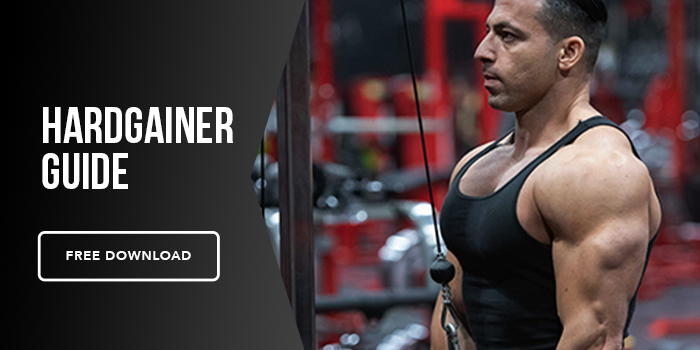Forget miracle creams and “biohacking” gimmicks — if you want to age well, function fully, and keep doing the stuff you love for as long as possible, building muscle is the closest thing we have to a cheat code.
Let’s break down why muscle is more than just a flex — it’s your body’s built-in life extension plan.
1. Muscle Fights Off the Real Villain of Aging: Sarcopenia
As you age, you naturally lose muscle — unless you actively fight to keep it.
This age-related muscle loss is called sarcopenia, and it’s one of the biggest predictors of frailty, falls, loss of independence, and even early death. By age 80, people who don't resistance train can lose up to 50% of their muscle mass.
But the good news? Resistance training works at any age.
Studies show that older adults — even into their 80s and 90s — can build strength and increase muscle mass with a basic, consistent strength routine. Which is to say, normalize grandparents who deadlift!
2. Muscle Keeps You Moving (Literally)
Muscle supports balance, posture, joint health, and coordination. This means fewer falls, fewer injuries, and more mobility as you age.
You can get up off the floor without groaning.
You can hike, play pickleball, or just walk the dog without pain.
You’ll maintain functional independence far longer.
One of the strongest indicators of long-term health? Leg strength. The ability to perform a simple sit-to-stand test correlates with longevity and lower all-cause mortality.
Forget 10,000 steps a day — how many pain-free lunges can you do?
3. Muscle is a Glucose Sink (That’s a Good Thing)
As we age, the risk of insulin resistance, prediabetes, and type 2 diabetes increases. But muscle tissue acts like a sponge for glucose — absorbing sugar from the bloodstream and using it for energy.
More muscle = better blood sugar regulation.
Weight training increases insulin sensitivity, helping prevent metabolic disorders and supporting healthy blood vessels, organs, and brain function.
In other words: lifting weights is good for your pancreas. And your brain. And your future self.
4. Muscle Supports Healthy Hormone Levels
Hormones like testosterone, growth hormone, and IGF-1 decline with age. Resistance training helps blunt those drops.
Lifting weights promotes:
- Higher testosterone (in both men and women)
- Increased growth hormone output
- Better regulation of cortisol and stress response
These hormones influence energy, libido, mental clarity, recovery, and mood.
You don’t need to biohack your way to hormonal health. Just lift. That’s the real hormone replacement therapy.
5. Muscle Protects Your Bones
One in two women and one in four men over 50 will break a bone due to osteoporosis. That’s not because they didn’t drink enough milk — it’s often because they didn’t resist load enough.
Weight-bearing exercise increases bone mineral density, especially in the hips, spine, and wrists — the places most commonly fractured during aging.
Strong muscles = strong bones. Period.
6. Muscle Keeps Your Metabolism Alive
We’ve all heard the phrase “your metabolism slows down as you age.” It’s true — but mostly because you lose muscle, not because your body just gives up.
Muscle is metabolically active tissue. It burns calories at rest. More muscle means a higher resting metabolic rate, more daily calorie burn, and easier weight maintenance — even when you’re not exercising.
Lifting weights is your best shot at avoiding that “I eat less than ever and still gain weight” feeling.
7. Muscle Boosts Brain Health
The mind-body connection isn’t just a yoga buzzword.
Recent research shows strength training improves cognitive function, especially in older adults. It’s been linked to:
Better memory
Reduced risk of Alzheimer’s and dementia
Improved mood and reduced symptoms of depression
Physical strength is mental strength — and lifting helps build both.
8. Muscle is Protective Against Injury, Illness, and Hospitalization
When illness or injury strikes, muscle mass determines how well — and how quickly — you bounce back.
Hospital patients with higher muscle mass:
- Recover faster
- Experience fewer complications
- Are less likely to develop pressure ulcers or infections
Think of muscle as your resilience reserve — the more you have in the bank, the better you weather the storm.
How to Build (and Keep) Muscle As You Age
✔ Strength train 2–4x per week — consistency > perfection
✔ Prioritize compound movements — squats, hinges, pushes, and pulls
✔ Progress gradually — use heavier loads, more reps, or slower tempos over time
✔ Eat enough protein — aim for 1g per pound of target bodyweight
✔ Sleep, recover, and manage stress — because building muscle is a full-body process
Final Thoughts
There’s no anti-aging pill. But there is a squat rack.
Building and maintaining muscle won’t just help you live longer — it’ll help you live better.
✔ Move with ease
✔ Stay metabolically healthy
✔ Stay sharp
✔ Stay strong
Muscle won’t make you immortal. But it might keep you from needing a walker to grab a snack from the pantry. And in the end, isn’t that the longevity that actually matters?






